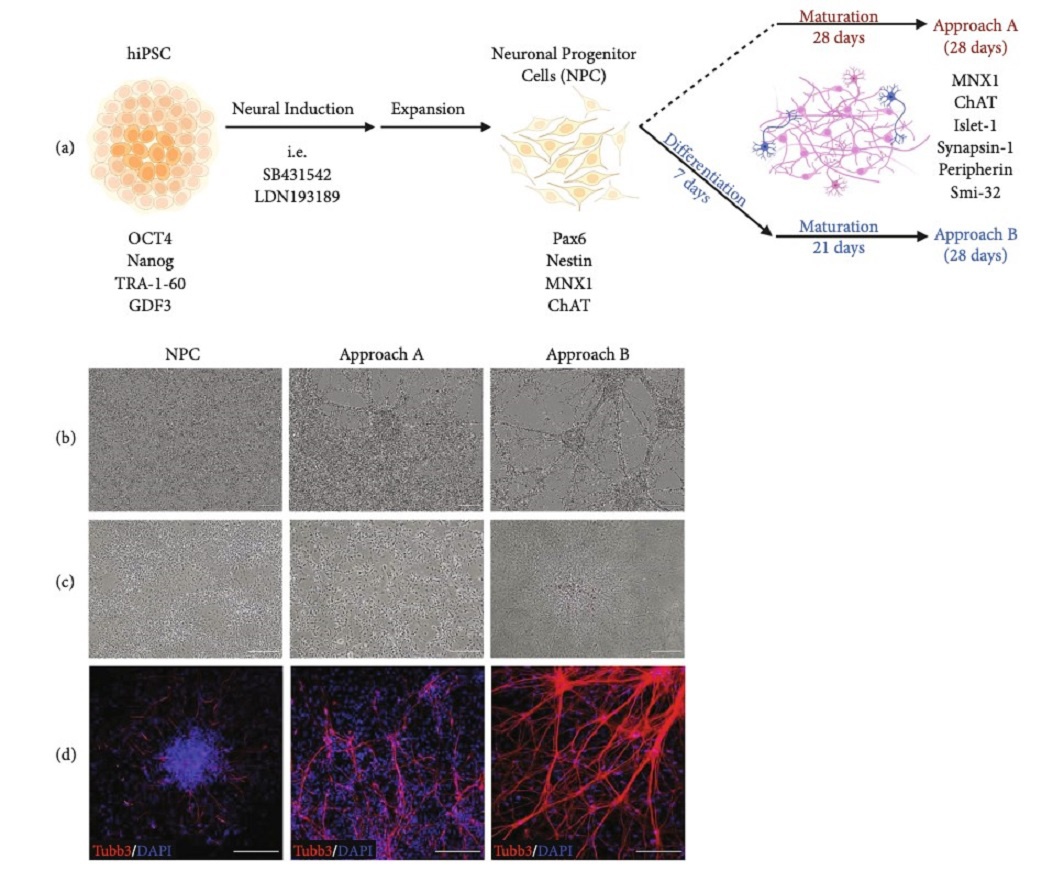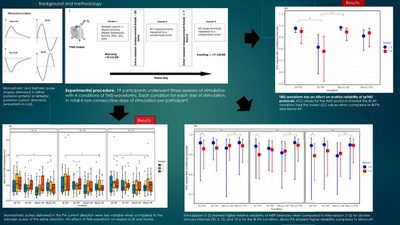
The Efficiency of Direct Maturation: The Comparison of Two hiPSC Differentiation Approaches into Motor Neurons
14 Dezember 2022
Abstract:
Motor neurons (MNs) derived from human-induced pluripotent stem cells (hiPSC) hold great potential for the treatment of various motor neurodegenerative diseases as transplantations with a low-risk of rejection are made possible. There are many hiPSC differentiation protocols that pursue to imitate the multistep process of motor neurogenesis in vivo. However, these often apply viral vectors, feeder cells, or antibiotics to generate hiPSC and MNs, limiting their translational potential. In this study, a virus-, feeder-, and antibiotic-free method was used for reprogramming hiPSC, which were maintained in culture medium produced under clinical good manufacturing practice. Differentiation into MNs was performed with standardized, chemically defined, and antibiotic-free culture media. The identity of hiPSC, neuronal progenitors, and mature MNs was continuously verified by the detection of specific markers at the genetic and protein level via qRT-PCR, flow cytometry, Western Blot, and immunofluorescence. MNX1- and ChAT-positive motoneuronal progenitor cells were formed after neural induction via dual-SMAD inhibition and expansion. For maturation, an approach aiming to directly mature these progenitors was compared to an approach that included an additional differentiation step for further specification. Although both approaches generated mature MNs expressing characteristic postmitotic markers, the direct maturation approach appeared to be more efficient. These results provide new insights into the suitability of two standardized differentiation approaches for generating mature MNs, which might pave the way for future clinical applications.






